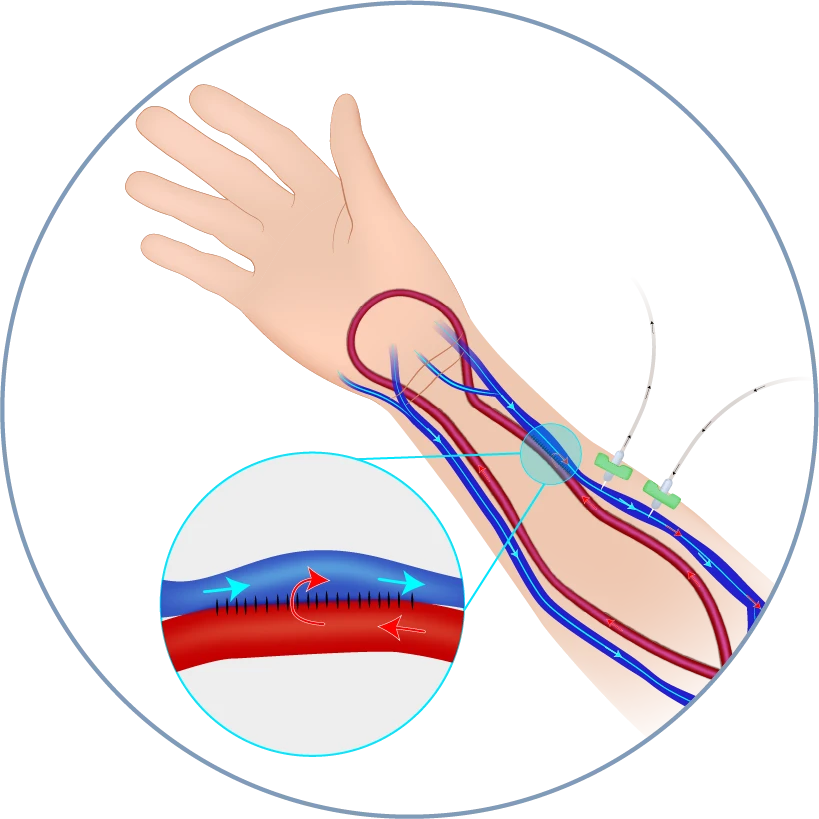Fistula Creation/Fistulogram
A percutaneous arteriovenous fistula (AVF) is a minimally invasive procedure that creates a direct connection between an artery and a vein, designed for patients who need hemodialysis. This method offers a quicker recovery and fewer complications compared to traditional surgical techniques.


Why Choose AVF?
The percutaneous approach offers several benefits over open surgery, including:
- Minimally invasive: No large incisions, which means a quicker recovery and fewer complications.
- Faster access to dialysis: Patients typically heal faster, allowing for quicker access to life-saving dialysis treatments.
- Less scarring: The small puncture means minimal scarring compared to traditional surgery.
Initial Evaluation
Before the procedure, you’ll undergo an ultrasound evaluation and consultation to ensure that your anatomy is suitable for fistula placement. If you’re a good candidate, the procedure will be scheduled, and a supraclavicular nerve block will be administered just before the creation of the fistula.
How the Procedure Works
Using local anesthesia and ultrasound guidance, a small needle is inserted near your collarbone to administer the anesthetic around the brachial plexus, which numbs the area. The focus then shifts to your elbow area, where local anesthesia is applied, and a small incision is made to access both a vein and an artery.
A specialized device uses radiofrequency energy to create the connection between the radial artery and the vein, just below the elbow. This connection allows for efficient blood flow, essential for dialysis, and does not require any sutures or implants.
Success Rates
Clinical trials show an 88% maturation rate within 90 days, meaning most fistulas become fully functional within this time. The procedure also has an impressive 91.8% functional patency rate at five years, ensuring long-term effectiveness. In some cases, additional procedures may be necessary to help the fistula mature, depending on your anatomy.
Recovery
Since the procedure is minimally invasive, recovery is generally quick. Most patients can return to their regular activities soon after the procedure. Follow-up care will be provided to ensure the fistula is maturing properly and is ready for use in dialysis.
If you’re a candidate for AVF, this advanced option offers a safe and effective way to prepare for dialysis. Contact Colorado Advanced Endovascular today to learn more and schedule your consultation.
Request an appointment
Schedule a consultation with our expert interventional radiology team to learn more and find out if this innovative treatment is right for you.